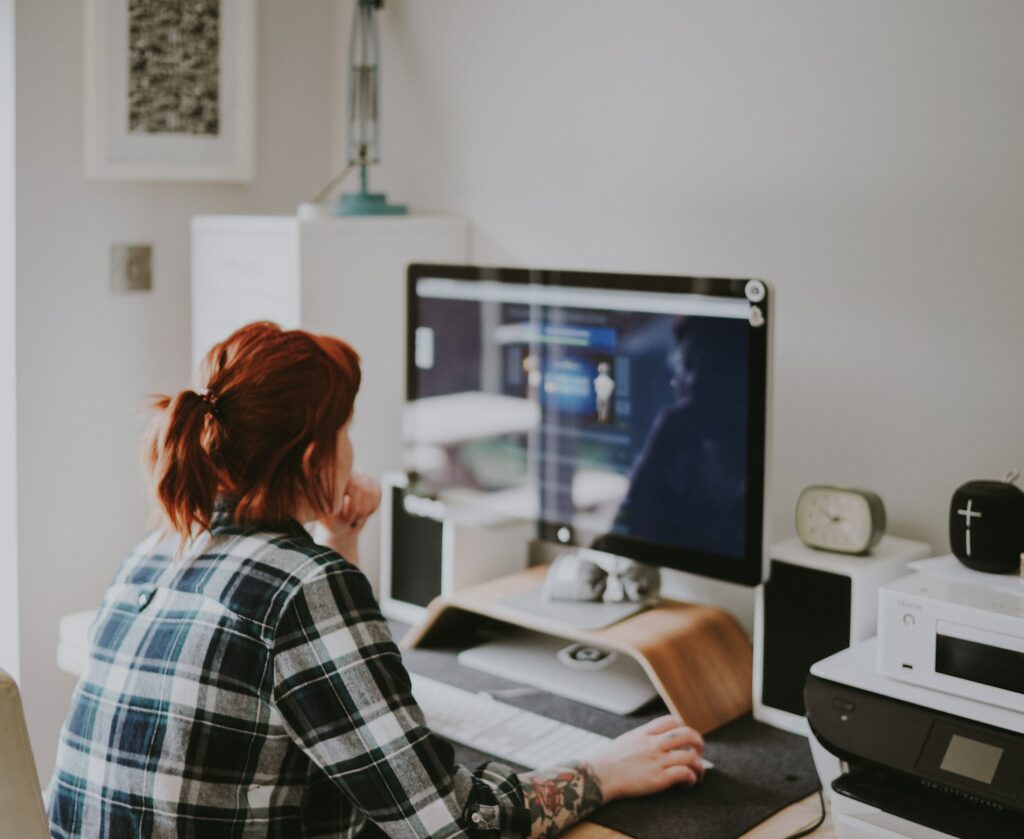Share
Your learning environment can be the difference between failure and success. No matter what you’re looking to learn, your location, learning methods, and the organisation’s culture and approach to learning can all determine performance, focus and memory.
With an estimated 44% of the UK workforce working from home some of the time in 2023, it’s clear that remote or hybrid working models are here to stay. But having a mixture of work settings means we’re now having to learn and work in entirely different environments than we were used to. So, no matter where we are, it’s incredibly important to ensure that the environment is going to assist our learning.
No matter the context, learners are going to better engage and participate if they’re in an environment where focus and creativity are maximised and they feel comfortable to share ideas and ask for help. So, whether you’re trying to update your own learning environment or looking for advice on creating the ideal learning space for others, here’s some of the best advice on what makes a good learning environment.
What is a learning environment?
‘Learning environment’ can refer to a culture, a context, an approach to teaching and learning or a physical location. Whilst many people think of a school or university as a typical learning environment, learning can occur in a wide range of different contexts and settings. What works well for one learner may not for another, so effective learning environments tend to vary.
Different components can make up a learning environment. It can be the physical properties, such as location, decoration or the devices and materials being used. But it can also be elements like the activities and tasks being completed, the methods used to assess progress and performance and what kind of working culture is influencing the learning.
Creating a positive learning environment for yourself
Establish routine
When you’re setting up a learning environment for yourself, try to implement routine into how and when you work there. When a learning environment is just a corner of your home then it can be easy to blur the lines between personal time and time you spend learning or working, but if you don’t set boundaries then it can be very hard to get into the right headspace to work.
Our brains love routine and order, and establishing a routine within your learning environment will help you to focus and make you more productive in the time you have set aside. If you block out time in your day specifically for learning and stick to it, your brain will recognise the environment as a place where focus and productivity are required and help you to feel more motivated and engaged.
Minimise distractions
Distractions must be kept to a minimum. It may seem obvious, but you’d be surprised how many people set up a home learning environment in a place where there are plenty of external factors that are constantly distracting them and stopping them from working well.
Minimising distractions can be as simple as making sure your phone or tablet is left in another room. You may also want to try and reduce background noise, so choosing a quiet space or using noise-cancelling headphones will also benefit you.

Reward progress
You might not have a tutor or teacher to do this, but you’ll still find that rewarding progress or marking accomplishments can make a difference. You’ll be more motivated if you know that you have a reward coming at the end of a task or reaching a milestone, and it helps to break up repetitive learning.
This can be as simple as giving yourself a ten-minute break after a certain amount of time focusing or watching an episode of a television show when you complete a piece of learning. It can also be motivating to share your successes with others.
Vary learning approaches
Varying learning approaches can make a big difference to engagement, as changing the way you review and retain the information can help to prolong and improve focus.
You can try different ways of taking notes such as bullet points, mind maps and summary sentences, listen to audio content or watch video content instead of just reading. Discussing what you have learnt with others can also help cement the information in your brain.
Set targets
In the same way that rewarding yourself can help, setting yourself personal targets can also provide structure and motivation. You’ll likely have overall goals, but even setting yourself small goals at the start of every day will help to break down the work that needs to be done and give you reasons to celebrate or reward yourself throughout the day.

Creating a positive learning environment for others
Create a supportive learning culture
When you’re working with a group of learners, no matter their age, you need to create a learning environment where support is a key part of the culture. Individuals are not going to want to share their ideas or ask for help if they feel that they are not supported by the people around them, so you need to establish this support from the start.
It can be useful to provide mentors or support systems within a learning environment to ensure that help can be given on a peer-to-peer basis. At the very least, demonstrate that you are always willing to help your learners and encourage asking for help whenever it is needed.

Give positive feedback and praise successes
Rewarding good work, effort or progress is one of the most important characteristics of a good learning environment. Learners respond much better to positive praise than negative feedback, and you’ll create an environment that has a much more positive atmosphere if you make constructive and optimistic feedback a part of the culture.
You should also work to give everyone positive feedback no matter what their progress or level of understanding is as this helps to keep the learning environment fair and motivates everyone, as well as keeping them feeling appreciated.
Make everyone feel safe
As human beings, we cannot perform at our best when our basic needs are not being met, and one of the most important of these is a feeling of safety and security. Therefore, feeling supported and safe is an essential part of a learning environment, especially for learners who are less experienced.
So, consider their physical wellbeing, as well as making sure they feel welcome, respected and cared for.

Use fun learning strategies
Information is more likely to be retained if it is learnt in a fun and engaging way, so using creative learning strategies will not only make your learning environment a more positive space, but will also help your learners to remember the content better.
Changing up the strategies that you use to teach will also keep your learners engaged for longer, as they’ll be using different skills so won’t switch off or get bored.
Summary
Characteristics of a good learning environment can vary depending on the context, learners, and content that’s being taught. However, elements such as minimal distractions, a clear routine, a positive atmosphere and varied approaches and formats of teaching have been proven to improve performance and facilitate effective learning.
Overall, a good learning environment is key to a positive learning culture. If you’re interested to explore other topics related to a positive learning culture, have a read of The rise of experience-led learning and Lifelong learning in the workplace: Why managers should encourage it and how it can make an organisation thrive.
Share

